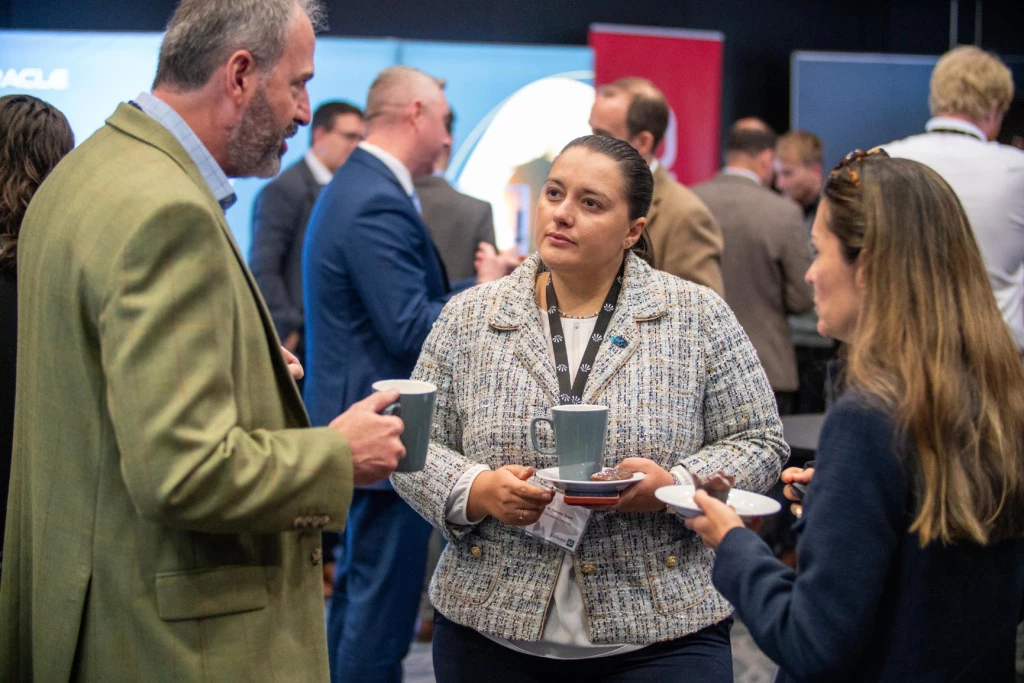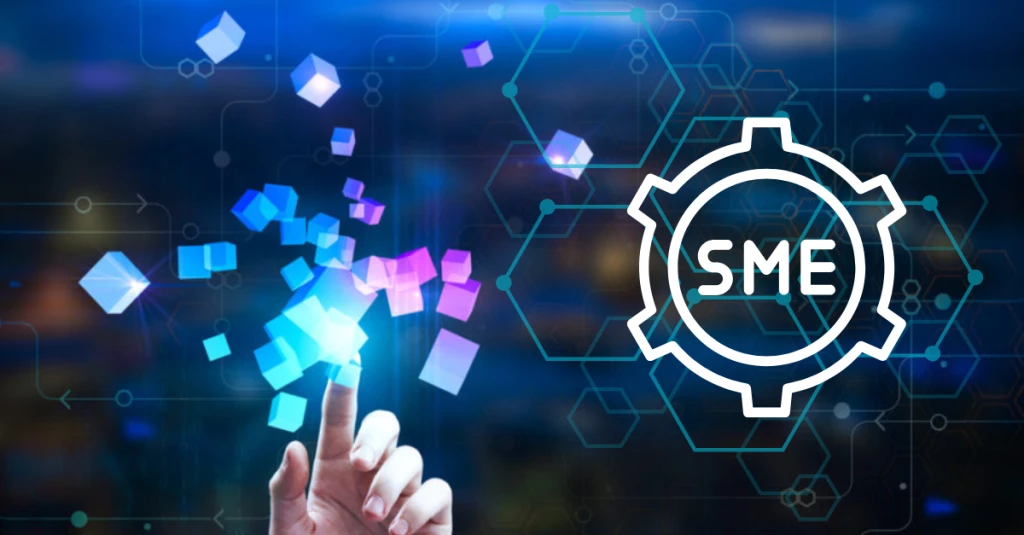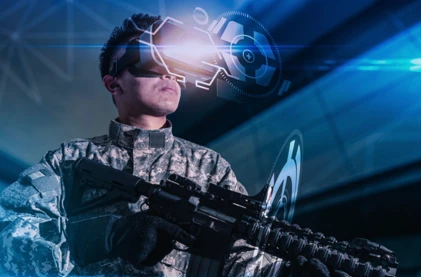From Accelerator to Innovator: Perspectives from an SME on Defence Transformation
Add bookmark
As part of Defence iQ's ongoing research into innovation and enterprise transformation in Defence, I spoke with representatives from Elemendar, a cyber SME that emerged from the GCHQ/NCSC Cyber Accelerator, to understand their approaches to ideation and innovation and gain their perspective on how Defence can work with SMEs more effectively.
The drive to innovate and leverage the technologies of the Digital Age is reshaping the defence policy, culture and acquisition, and this is underpinned by the need to keep pace with new technologies to maintain strategic advance. What does innovation mean to Elemendar, and how have you created an organizational culture or process that is innovative or disruptive by nature?
Asking a start-up about innovation is a bit like asking a fish about water. We are succeeding in an industry that I only heard of three months before starting the business, and the technology we use is so cutting- -edge that we have to incorporate academic developments from pre-prints because the journal publication cycle is too slow.
In any other environment, bar perhaps the military, that pressure to create situational awareness and deal with operational uncertainty is not something that one expects to encounter every day. Yet we’ve done this eight times in the last 25 years across our senior management team and that’s embedded in the ways of working that new team members are on-boarded into, so it feels quite natural.
Could you describe your ideation to invention process re your AI solution? For example, the identification of an end user need, to the design and development of the AI system? What were some of the biggest challenges you faced or lessons learnt with moving from the early stages of technology readiness i.e. ideas and concepts, to prototypes and demos?
At the first GCHQ / NCSC Cyber Accelerator three years ago, we learnt about Cyber Threat Intelligence (CTI, information on what the threats are and what to do about them) from our technical mentor at the NCSC. He showed us that most CTI is expressed in the form of natural language, the language that we humans use to communicate with each other, both in the public and private sector.
This is fine as long as there is a human to do something with their understanding of that language on the other side, that of the CTI consumer. The problem is that these people don't exist: we simply don't have enough trained cyber threat analysts.
Having identified that user need and validated with a number of other vendors through trade expos and the like, the first challenge was building an initial proof of principle. We started with a different technology stack but realised that we needed to build a machine learning (ML) system, and used a cloud vendor’s library of appropriate models for rapid prototyping within weeks. This was well received and gave us confidence to build a more robust proprietary ML system demonstrator over the following months, which brought a new challenge with some rather hard maths problems.
The biggest lesson then came when we began applying the new ML system to cybersecurity data, which showed us that the available data sources weren’t high quality enough for the machine to learn from them. At that point, the technology was mature enough to attract external partners who brought better data with them, allowing us to move to a more traditional incremental innovation approach through customer feedback.
The company was started by two graduates of the UK’s first GCHQ / NCSC Cyber Accelerator. What was your experience working in a government ‘start up’? How did this experience shape Elemendar?
Elemendar wouldn’t exist without the Accelerator - it’s how we learnt about the user need, secured our first government contract, and committed to start the business. It was an intense few months: don’t expect to get anything else done during one of these residential programmes when contact hours alone are 2-3 days a week!
At the same time, being close to a national security apparatus that is making an unprecedented effort to become more culturally open towards start-up ways of working helped us understand how to manage stakeholders in an area where traditional experiences of government procurement are not as relevant. Not to mention the mission focus imbued in the Accelerator that’s in Elemendar’s DNA as much as the technical innovation that we brought from the team’s previous commercial experiences.
The Defence Technological and Industrial Base is becoming much more inclusive and diverse. Non-traditional defence companies, SMEs and start-ups are starting to play a more significant role in defence and security capability development and new governmental industrial policies have adapted to reflect this.
What’s your perspective on the ongoing transformation in defence enterprise? What strategic benefits does it offer you from a business perspective? Are there any challenges you’ve encountered with trying to access open calls, competition or government contracts?
We’ve seen tremendous evolution in the defence enterprise over the last decade and that’s been overwhelmingly positive. Vehicles like DASA in the UK and Hacking 4 Defense in the US are explicitly encouraging SME participation while even more traditional frameworks encourage primes to bring on SMEs. From a business perspective, it has meant that we were able to be financially sustainable right from the start by tapping into government resources and procurement - a huge advantage as it came with customer validation as well as cash.
However the proliferation of potential engagement routes can easily consume a start-up’s resources with unlikely material outcomes unless better focused, and communicating this focus across disparate organisations within the defence enterprise is an evolving challenge.
We have entered a new decade. What have been the most significant changes you’ve noticed with regards to technology development in the past ten years, particularly in the AI and cyber space? What are your priorities for the 2020s and what would your advice/suggestions be to those in government who are looking to innovate and work with SMEs like Elemendar?
I’ll focus on AI as that’s been of more pronounced general interest, though the conclusions are quite similar for cyber too. As the last decade went on, AI moved up the hype peak and then down the trough of disillusionment in Gartner’s hype cycle. That was good because many people got interested in what we had to say and opened a lot of doors, and bad because the hype didn’t deliver for many and disappointment set in. It's now a great time again for senior technology leaders in the field because, having debunked the hype, a pull is coming in from the business for AI towards areas constrained by resources, with real business cases.
Over this decade, we’ll see more people in the workforce who have been living in this AI- -powered world, where everyone is asking Siri for directions etc and that’s the default. When these younger people start calling the shots, a generational shift will happen: it won’t be the tech but the realignments in behaviour that will make the difference. We’re currently focusing too much on the implausible but scary Terminator scenarios because these sell headlines, and not enough on the slow, invisible, inexorable big cultural changes.
It’s the same in cyber. We tend to underestimate the social effects and what's going to happen long-term, and overestimate the technological effects in the short term. Being mindful of that cognitive bias is my main suggestion to officials who look to SMEs for innovation. SMEs can deliver the tech, but the tech is only part of the puzzle. Real progress towards government objectives, and the resulting commercial success for the SMEs that enable such progress, needs a more connected support ecosystem that reaches beyond tech alone.


























